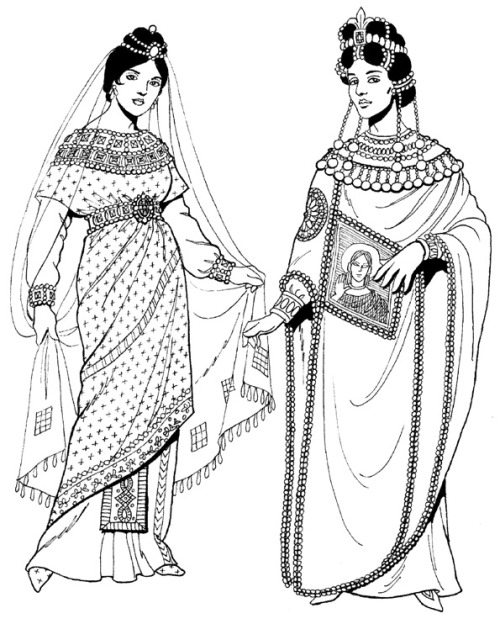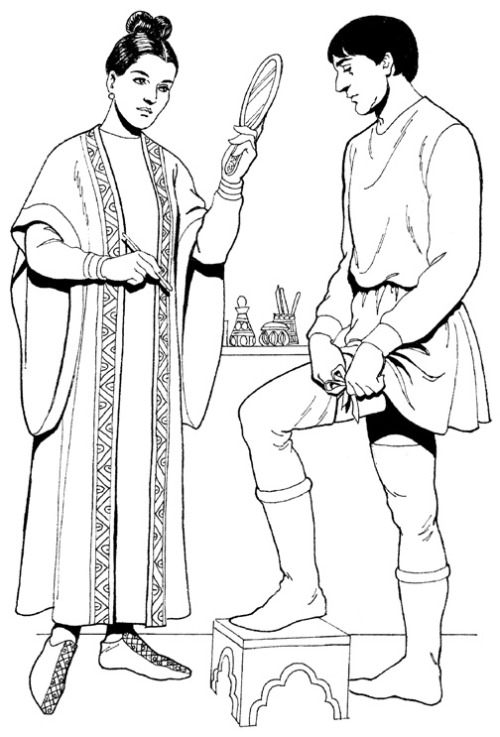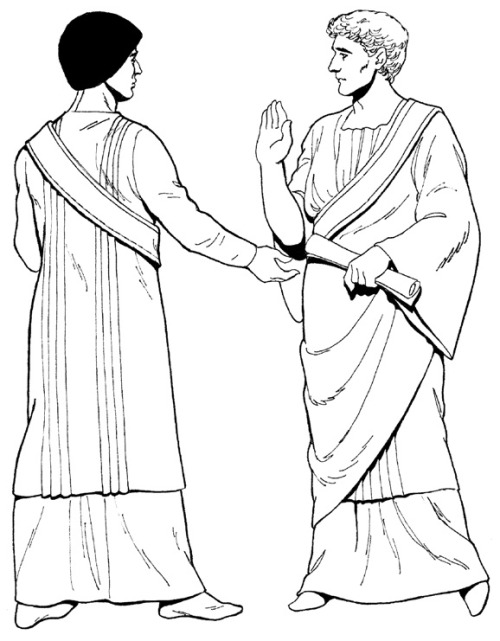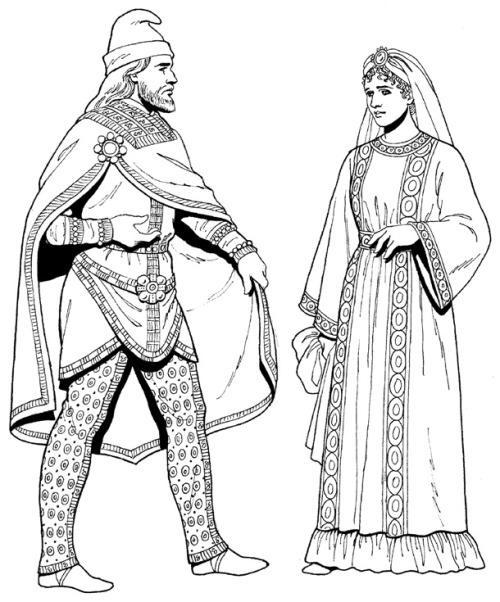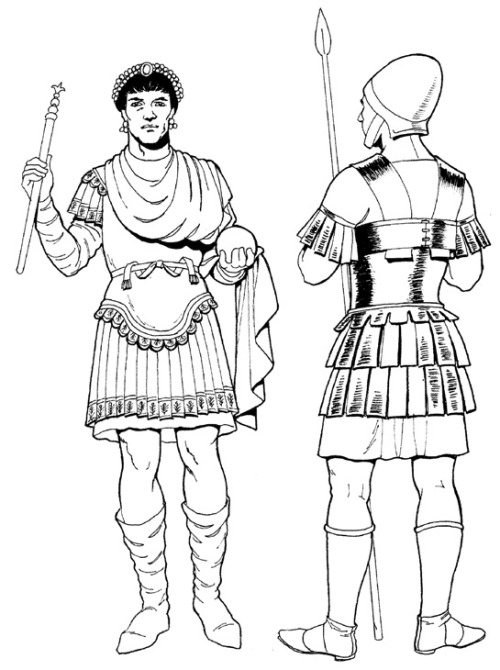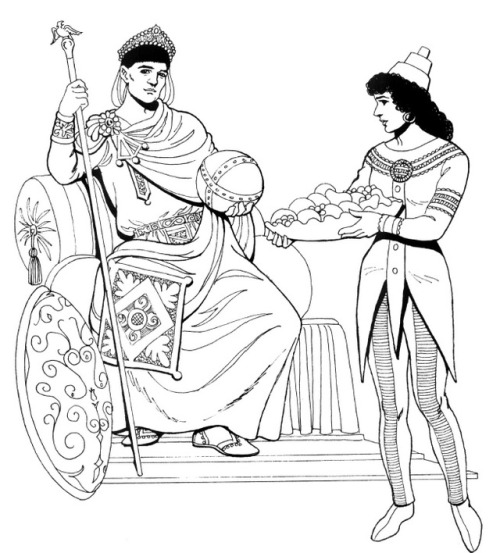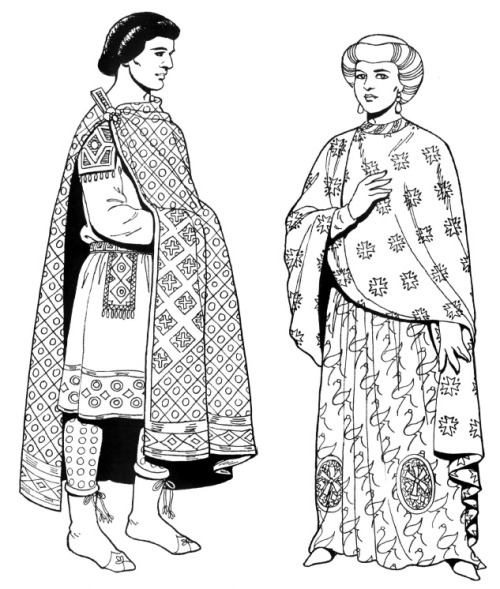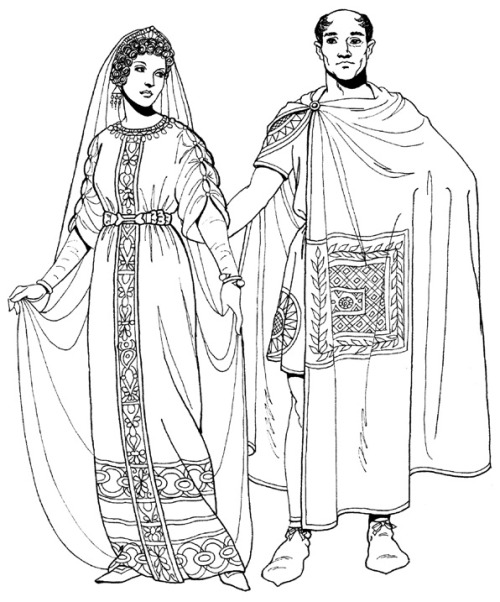sartorialadventure: Byzantine clothing from a Tom Tierney coloring book The Byzantine Empire, also r
sartorialadventure: Byzantine clothing from a Tom Tierney coloring book The Byzantine Empire, also referred to as the Eastern Roman Empire or Byzantium, was the continuation of the Roman Empire in its eastern provinces during Late Antiquity and the Middle Ages, when its capital city was Constantinople (modern Istanbul, formerly Byzantium). It survived the fragmentation and fall of the Western Roman Empire in the 5th century AD and continued to exist for an additional thousand years until it fell to the Ottoman Turks in 1453. During most of its existence, the empire was the most powerful economic, cultural and military force in Europe. “Byzantine Empire” is a term created after the end of the realm; its citizens continued to refer to their empire simply as the Roman Empire (Greek: Βασιλεία Ῥωμαίων, tr. Basileia Rhōmaiōn; Latin: Imperium Romanum), or Romania (Ῥωμανία), and to themselves as “Romans”. 1. Empress Theodora2. 5th-century woman in tunic and dalmatic, and man in tunic shirt (tying on his stockings! oo-la-la!)3. 6th-century nobles: long shirt under tunic, and long shirt under toga4. 6th-century nobles: man in short mantle over tunic with decorative apron, brocade pants, and phrygian cap; woman in dalmatic and veil5. Emperor Flavius Arkady (337-408 CE) in shirt under tunic and breastplate, and soldier in linen, leather lorica (breastplate)6. Emperor Flavius Arkady in tunic and purple mantle, and maid in Persian-style hat, jacket, trousers7. Justinian’s courtiers, woman in turban8. Noblewoman and official, tiara with veil attached -- source link
Tumblr Blog : sartorialadventure.tumblr.com
#greek history#greek culture
